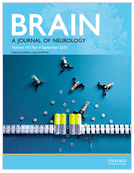 Sarcoglycanopathies are rare myopathies belonging to the clinically and genetically very heterogeneous group of girdle muscular dystrophies (LGMD for limb girdle muscular dystrophy). Described in the 1990s following the breakdown of the protein complex linked to dystrophin, they are four in number depending on the type of sarcoglycan involved: LGMDR3 linked to α-sarcoglycan, LGMDR4 linked to β-sarcoglycan, LGMDR5 linked γ-sarcoglycan and LGMDR6 bound to δ-sarcoglycan. Clinically, they have in common a proximal deficit, of the Duchenne or Becker type, and are very often accompanied by pseudohypertrophy of the calves and tongue. Their prevalence varies greatly from one geographical area to another, the Maghreb and the Mediterranean rim being particularly affected by LGMDR5.
Sarcoglycanopathies are rare myopathies belonging to the clinically and genetically very heterogeneous group of girdle muscular dystrophies (LGMD for limb girdle muscular dystrophy). Described in the 1990s following the breakdown of the protein complex linked to dystrophin, they are four in number depending on the type of sarcoglycan involved: LGMDR3 linked to α-sarcoglycan, LGMDR4 linked to β-sarcoglycan, LGMDR5 linked γ-sarcoglycan and LGMDR6 bound to δ-sarcoglycan. Clinically, they have in common a proximal deficit, of the Duchenne or Becker type, and are very often accompanied by pseudohypertrophy of the calves and tongue. Their prevalence varies greatly from one geographical area to another, the Maghreb and the Mediterranean rim being particularly affected by LGMDR5.
The European consortium for sarcoglycanopathies published in September 2020 a retrospective observational study using data collected by 33 centers specializing in neuromuscular diseases in 13 European countries.
- Data from 396 people with genetically confirmed sarcoglycanopathy were analyzed.
- One hundred and fifty-nine people were affected by LGMDR3 linked to α-sarcoglycan, 73 by LGMDR4 linked to β-sarcoglycan, 157 by LGMDR5 linked to γ-sarcoglycan and 7 by LGMDR6 linked to δ-sarcoglycan.
- In LGMDR3, the onset was later and the progression of the disease slower than in the other forms.
- Cardiac involvement was more common in LGMDR4.
- Onset before age 10 and residual protein expression below 30% of normal are independent risk factors for loss of ability to walk before age 18 in LGMDR3, R4 and R5.
